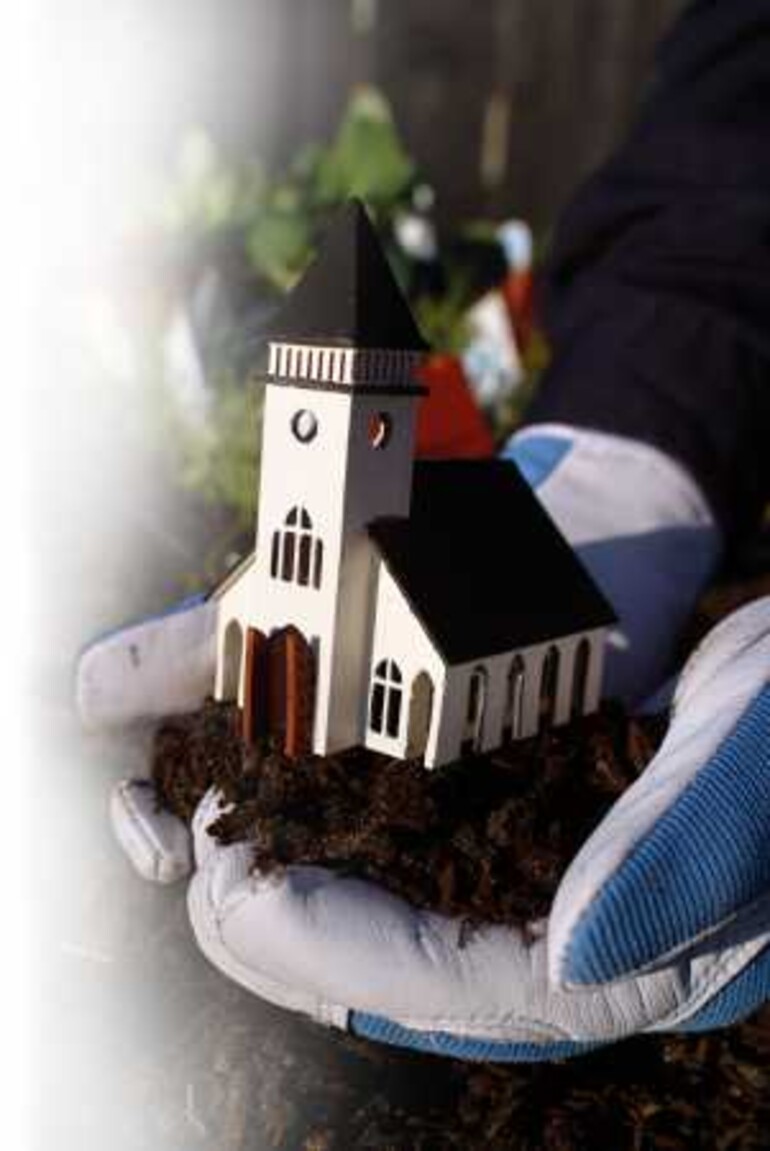The Seventh-day Adventist Church has always been an aggressive church-planting movement. Test your knowledge of Adventist church planting with this quiz. You’ll find the answers and scoring at the end.
1. Who should be involved in church planting?
a. Specially trained pastors
b. Conference leaders
c. College students
d. Church lay leaders
e. All believers
f. All of the above
g. None of the above
2. Who is the leading Adventist expert on starting new churches?
a. Cyril Miller
b. George Knight
c. Russell Burrill
d. Ron Gladden
e. Ron Watts
f. Ellen White
g. None of the above
3. How many Adventist churches that are still meeting have been planted in the North Pacific Union in the last 125 years? About
a. 40
b. 100
c. 400
d. 1000
e. None of the above
4. Where should new churches be planted in the Northwest?
a. The ten largest metro areas
b. Wherever there is an Adventist church of 300+ members
c. Wherever God provides the opportunity for a viable church
d. All of the above
e. None of the above
5. What are some common mistakes new churches should guard against?
a. Pastoral dependency: wanting their own pastor from the beginning
b. Tithe diversion: not remitting tithe to the conference in a timely manner, or not recognizing the biblical distinction between tithe and offerings
c. Doctrinal disharmony: avoiding the unique message, identity or mission of Seventh-day Adventism
d. Premature birth: core group does not yet have one or more of the following: unity, experienced church leaders, recognition of sacred things (marriage, tithe, Sabbath), outreach experience, commitment to worldwide mission and message of Adventism, soul-winning plan, spirit of cooperation with conference leadership
e. Disconnection from Adventist education: not taking steps to be involved in the governance and/or financial support of the local Adventist school(s)
f. Isolation: church and/or pastor does not connect regularly with other Adventist activities and leaders in the area
g. Lack of clarity on church organizational issues: such as how each of the following issues is handled in the Adventist Church and why—membership, ordination, baptism, assignment of pastoral care, accountability of local leadership to the congregation, accountability of pastors to the constituency, etc.
h. All of the above
6. Which conference in the North American Division has planted more churches in the last 30 years than any other?
a. Florida
b. Texas
c. Oregon
d. Northeastern
e. None of the above
7. Which division of the Adventist world church has planted the most churches in the past five years? (stats for 1998-2003)
a. North American Division
b. Inter-American Division
c. Southern Asia Division
d. Euro-Asia Division
e. Trans-European Division
8. What parts of the Bible are especially helpful in finding church planting principles?
a. Acts
b. The Pentateuch (Genesis–Deuteronomy)
c. The Gospels (Matthew–John)
d. The Epistles (Romans–Jude)
e. Daniel and Revelation
f. All of the above
g. None of the above
9. Where can you find counsel in Ellen White's writings about church-planting principles?
a. Christian Service, chapter 16, “The Church Expansion Movement,” pp.178–184
b. Evangelism, chapter 10, “Establishing and Holding New Members,” pp. 334–383
c. Testimonies for the Church, Vol. 7, Section One, “Acceptable Service,” pp. 9–50
d. Review & Herald, Aug. 24, 1886, paragraphs 1–16
e. The Acts of the Apostles, the entire book
f. A word search of “new churches,” “churches raised up,” etc. in the writings of Ellen G. White
g. All of the above
10. When new churches are started, how might the conference assign pastoral care for the new churches?
a. Pastor on a multi-pastor staff
b. Nearby pastor assisted by an intern
c. Pastor with only one church currently
d. Bi-vocational pastor (e.g. LE, Bible worker, unsponsored seminary student)
e. Conference/union/division staff person
f. School or institutional chaplain
g. New pastor to the area
h. Any nearby pastor willing to coach a lay-led group
i. Any of the above
11. How can we afford church buildings for new churches?
a. Keep the building humble and inexpensive.
b. Expect that non-members may contribute.
c. Sacrifice financially, since new buildings are crucial.
d. Recognize there is plenty of money to raise up churches, and erect buildings when selfishness is overcome.
e. Ask existing churches and church institutions to have the same spirit of sacrifice that helped them get started.
f. Donated labor by new and long-time members
g. Unreached people in the cities will give once they embrace the Adventist message.
h. All of the above.
12. How can we strengthen existing churches while planting new ones?
a. Train the members to share their testimonies and to preach.
b. Church leaders and the pastor visiting in the homes of the members
c. Distribute our literature.
d. Initiate ministries such as visiting the sick, teaching healthful living, helping the unemployed find work, etc.
e. Members taking the initiative to help others as they have been helped
f. Teach the people to work for God and depend on Him rather than on the pastor.
g. Keep the vision that some church members will be taken to plant new churches.
h. Strengthen confidence in spiritual gifts, including the gift of prophecy.
i. Any of the above
13. What are some of the things that should be taught and done in new churches?
a. Sabbath observance
b. Healthful food preparation
c. How to help the needy and suffering
d. How to give home Bible studies
e. Faithfulness in tithes and offerings
f. Dangers of being fashion-driven
g. Carefulness in speech and conduct as a witness
h. Missionary work by every member
i. All of the above
14. A vibrant, healthy Adventist church of 200 members can personally reach a maximum of how many people on a regular basis?
a. 400
b. 1,000
c. 10,000
d. 50,000
e. 100,000
15. What should you do if God is impressing you to help plant a new church?
a. Forget it. It's too much work.
b. Wait till you have plenty of money to start something.
c. Start Sabbath services in your home immediately, and try to get as many to attend as possible.
d. Try to follow the model of non-Adventist church plants.
e. While staying active in your home church, begin a prayer and study group with interested people.
f. Talk to your pastor and/or conference leaders.
ANSWERS
1. f. All of the above. See Medical Ministry, p. 315.
2. f. Ellen White. While each person listed has either written about or been involved in planting Adventist churches, none have come close to what Ellen White (1827–1915) has done. She was personally involved in planting Adventist churches on three continents and helped start one of the largest coordinated church-planting movements in the last 2,000 years, which has planted over 115,000 organized churches and companies in the last 160 years.
3. c. 400. The Seventh-day Adventist Church Yearbook lists 414 churches and 62 companies for 2003.
4. d. All of the above. For a., see Evangelism, p. 60, 379, 384f. For b., see Ministry of Healing, p. 151 and Spalding and Magan Collection, p. 397. For c., see Testimonies, Vol. 6, p. 24 and The Acts of the Apostles, p. 109.
5. h. All of the above. For a., see Review & Herald, Oct. 22, 1889, par. 3. For b.–d., see Testimonies, Vol. 6, p. 85. For e., see Testimonies, Vol. 6, p.107.2–109.3. For f., see The Ellen G. White 1888 Materials, compiled in 1987, p. 209.2. For g., see Ministry of Healing, p. 147 and Testimonies, Vol. 7, p. 174.
6. b. Texas, with a net total of 102 newly organized churches. A dramatic period of growth took place from 1977–84 when 69 churches were planted in a seven-year period under the leadership of Cyril Miller, then conference president. Net totals of the other conferences listed are Florida, 93; Northeastern, 92; and Oregon, 25. Answer e. could also be correct, because South Atlantic Conference in the Southern Union sub-divided into the South Atlantic and Southeastern conferences in 1978; added together, they have 258 newly organized churches.
7. c. Southern Asia Division, with a net total of over 1,000 newly organized churches in the past five years under the leadership of Ron Watts, president. Approximate number of new churches in the other listed divisions are Euro-Asia, 450; Inter-American, 300; North American, 200; Trans-European, 40.
8. f. All of the above. The book of Acts describes how the first “Seventh-day Adventist” churches were planted. (Yes, they did keep the Sabbath holy and lived for the advent of Jesus.) The Pentateuch shows us the patterns Jesus established for His chosen people, the Gospels teach us how Jesus laid the foundation for the church, the Epistles are letters to newly planted churches, Daniel and Revelation show us where we are living in the flow of earth’s history and how God’s people are to live in the last days, and all the rest of the Bible “is useful for teaching, rebuking, correcting and training in righteousness” (2 Timothy 3:16).
9. g. All of the above.
10. i. Any of the above. For additional insight on this, see Review & Herald, Oct. 22, 1889, par. 2–3; Testimonies, Vol. 6, p. 414, Vol. 7 p. 19; Atlantic Union Gleaner, Jan. 8, 1902, par. 9; Review & Herald, Apr. 24, 1888, par. 10.
11. h. All of the above. For a., see Gospel Workers, p. 433.1. For b., see Evangelism, p. 379.3. For c., see Review & Herald, Nov. 14, 1899, par. 13. For d., see Kress Collection, p. 118.1. For e., see Testimonies, Vol. 7, p. 145.1–2. For f., see Testimonies, Vol. 6, p. 108.2 and Gospel Workers, p. 432.2–4. For g., see General Conference Bulletin, May 24, 1909, par. 6.
12. i. Any of the above. For a., see Testimonies, Vol. 7, p. 19. For b., see Pamphlets/PH002—Appeal and Suggestions to Conference Officers (1893), 18.1. For c., see Christian Service, p. 146.3. For d., see Welfare Ministry, p. 112.2. For e., see Testimonies, Vol. 7, p. 18.3. For f., see Testimonies, Vol. 7, p. 19.1. For g., see Testimonies, Vol. 3, p. 205 and Review & Herald, Jan. 19, 1897, par. 6. For h., see Review & Herald, Jan. 14, 1868, par. 8.
13. i. All of the above. For a., see Testimonies, Vol. 6, p. 353.1 and Manuscript Releases, Vol. 9, 88.1–2. For b., see Gospel Workers, p. 233.2–3. For c., see Manuscript Releases, Vol. 9, 87.3. For d., see Manuscript Releases, Vol. 9, 88.3. For e., see Testimonies, Vol. 6, p. 447.1–448.2 and Testimonies, Vol. 3, pp. 412–413. For f., see Testimonies, Vol. 5, p. 499.1–500.2. For g., see Review & Herald, Apr. 14, 1910, par. 6. For h., see Review & Herald, Aug. 24, 1886, par. 6
14. c. 10,000. Here is the rationale: IF… you had a congregation of 200 active, vibrant, faith-sharing Adventists, and … IF … each one had a circle of influence of 50 people they knew or crossed paths with every few months, and … IF … none of these circles of 50 overlapped, then … the maximum impact that church would have is 200 x 50 = 10,000. This is why we need a vibrant, healthy Adventist church for every 10k population if we are to truly have “this gospel of the kingdom preached in all the [Northwest] for a witness unto all [people] before the end comes" (Matthew 24:14, paraphrased).
15. e. and/or f. Not a., because Review & Herald, Nov. 14, 1899, par. 13. Not b., because Christian Service, p. 184.2; Testimonies, Vol. 6, 447.2; and Spalding and Magan Collection, pp. 82.5–83.2. Not c. or d., because Review & Herald, Oct. 22, 1889, par. 2–3.
SCORING RESULTS
Count your correct answers.
12–15: Excellent! Tell your pastor you are ready to help raise up an Adventist church!
8–11: Very good! You have a grasp of what it takes to start new Adventist churches. Begin praying about what you should do next.
4–7: Good. Look up the Bible and Ellen White references listed in this article to increase your understanding and conviction.
1–3: You have just had your first introduction to Adventist church planting. Keep studying and praying because Ellen White says, “Upon all who believe, God has placed the burden of raising up churches, for the express purpose of educating men and women to use their entrusted capabilities for the benefit of the world, employing the means He has lent for His glory. … They are to employ His entrusted talents in building up His work and enlarging His kingdom” (Medical Ministry, p. 315).
Editors note: The references listed above are all books, manuscripts, or articles available from the Ellen G. White Estate. If you have Internet access you can look up these references at http://egwdatabase.whiteestate.org.
Check out the Upper Columbia and Oregon news sections for inspirational stories about how newly planted churches are changing the lives of their members and the lives of people in their communities.













